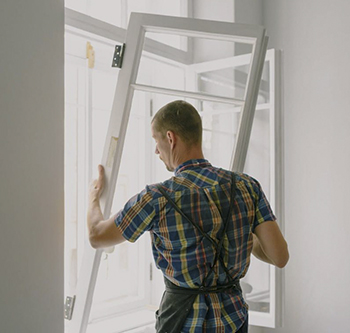Model-based design
Design technology has developed greatly in recent years, from traditional 2D hand-drafting processes to computer aided design (CAD), building information modeling (BIM), and augmented and virtual reality.
Model-based design is a process that involves creating digital representations systems to help with design development and decision-making. It allows rapid analysis and comparison of design alternatives, co-ordination of and collaboration between team members, clear communication and visualisation of information, easy alteration, clash avoidance and so on.
By creating one model, as opposed to multiple independent drawings, a single data set can be developed from which all documents relating to the project are generated.
The process may begin with the creation of a 'design intent model', which in its early stages, could include simple massing diagrams or 2D symbols to represent generic elements of the design.
As the design progresses, the model may develop and the level of detail increase, including, first, objects based on generic representations, and then specific objects with specifications and method statements attached along with information about space allocation for operation, access,maintenance, installation, replacement and so on.
Ultimately, as the contractor and their supply chain take over development of the model, it may be described as a virtual construction model (VCM), containing all the information necessary to allow the objects in the model to be manufactured, installed or constructed.
The concept of model-based design is very broad, and the degree to which a design process is genuinely model-based, rather than simply involving the use of computers is very varied.
The levels of 'maturity' of information modelling have categorised as:
- Level 0: Unmanaged CAD (Computer Aided Design).
- Level 1: Managed CAD in 2D or 3D.
- Level 2: Managed 3D environment with data attached, but created in separate discipline models.
- Level 3: Single, online, project model with construction sequencing, cost and lifecycle management information.
For more information see BIM maturity levels.
Parametric modelling (or parametric design) is the creation of a digital model based on a series of pre-programmed rules or algorithms known as 'parameters'. That is, the model, or elements of it are generated automatically by internal logic arguments rather than by being manually manipulated. For example, a rule might be created to ensure that walls must start at floor level and reach the underside of the ceiling. Then if the floor to ceiling height is changed, the walls will automatically adjust to suit.
For more information see Parametric modelling.
[edit] Related articles on Designing Buildings
- Abaqus simulation software.
- Archidict.
- Architectural communication.
- Asset information model AIM.
- BIM.
- Common data environment.
- Computer aided design CAD.
- Computer aided manufacturing.
- Concept drawing.
- Design coordination.
- Design intent model.
- Design management for construction projects.
- Design programme.
- Manual drafting techniques.
- Samples and mock-ups.
- Shaping Space - Architectural Models Revealed.
- Structural modeling and analysis.
Featured articles and news
Licensing construction in the UK
As the latest report and proposal to licence builders reaches Parliament.
Building Safety Alliance golden thread guidance
Extensive excel checklist of information with guidance document freely accessible.
Fair Payment Code and other payment initiatives
For fair and late payments, need to work together to add value.
Pre-planning delivery programmes and delay penalties
Proposed for housebuilders in government reform: Speeding Up Build Out.
High street health: converting a building for healthcare uses
The benefits of health centres acting as new anchor sites in the high street.
The Remarkable Pinwill Sisters: from ‘lady woodcarvers’ to professionals. Book review.
Skills gap and investment returns on apprenticeships
ECA welcomes new reports from JTL Training and The Electrotechnical Skills Partnership.
Committee report criticises UK retrofit schemes
CIOB responds to UK’s Energy Security and Net Zero Committee report.
Design and construction industry podcasts
Professional development, practice, the pandemic, platforms and podcasts. Have we missed anything?
C20 Society; Buildings at Risk List 2025
10 more buildings published with updates on the past decade of buildings featured.
Boiler Upgrade Scheme and certifications consultation
Summary of government consultation, closing 11 June 2025.
Deputy editor of AT, Tim Fraser, discusses the newly formed society with its current chair, Chris Halligan MCIAT.
Barratt Lo-E passivhaus standard homes planned enmasse
With an initial 728 Lo-E homes across two sites and many more planned for the future.
Government urged to uphold Warm Homes commitment
ECA and industry bodies write to Government concerning its 13.2 billion Warm Homes manifesto commitment.
From project managers to rising stars, sustainability pioneers and more.
Places of Worship in Britain and Ireland, 1929-1990. Book review.
The emancipation of women in art.























